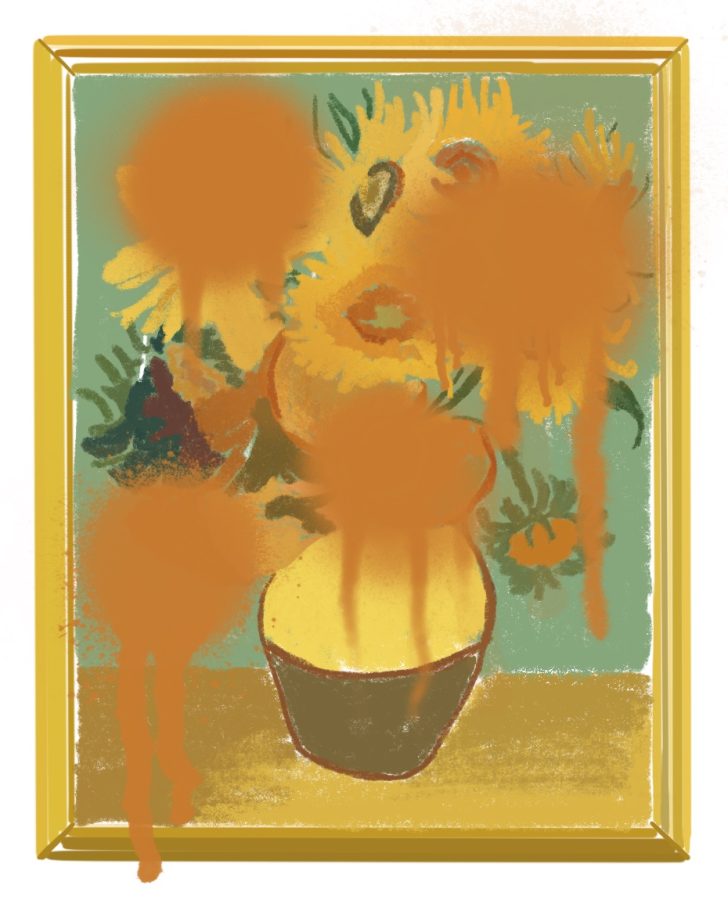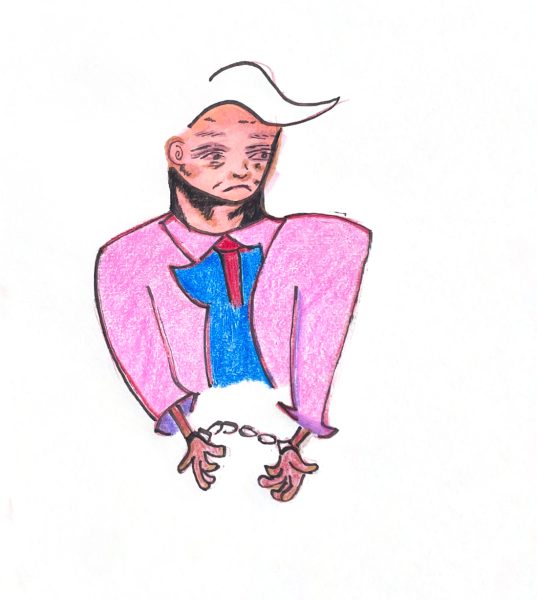Activists deface Van Gogh painting
October 25, 2022
On Oct. 14, two climate change activists from the Just Stop Oil organization went to the National Gallery in London in hopes of gaining attention from the media by throwing Heinz tomato soup on Vincent Van Gogh’s infamous “Sunflowers” painting. They also super-glued their hands to the wall near the painting and performed a speech about the negative effects that oil and gas companies have on the Earth’s climate.
It is important to note that the painting remains unharmed as it was protected by a glass screen. Although, it is controversial because not only do Van Gogh and his paintings have nothing to do with the current global climate crisis, but it seems like an unnecessary way to get the point across.
The activists had all the workings of a great speech which included the problem that oil and gas companies were having on British civilians — i.e. starvation and having to choose between food or heat for the night. The activists demanded a call to action for the Parliament of the United Kingdom to stop all future licensing and consent for the exploration, development and production of fossil fuels.
This publicity stunt is just one of many for Just Stop Oil — every day during October, the organization has protested at public landmarks in London. Some notable protests conducted this month include supporters super-gluing themselves to the tarmac at Shoreditch High Street for 15 days, blocking the famous Abbey Road Crossing and disrupting traffic at Parliament Square.
Is this form of protesting ethical or more destructive in the long run? Ultimately, the Van Gogh painting was unharmed, and their organization has gotten press and been heard of worldwide. Does this mean that they deserve leniency in their criticism from the media? There are ethical ways to protest; if no harm came from their actions, would it not be considered ethical?













